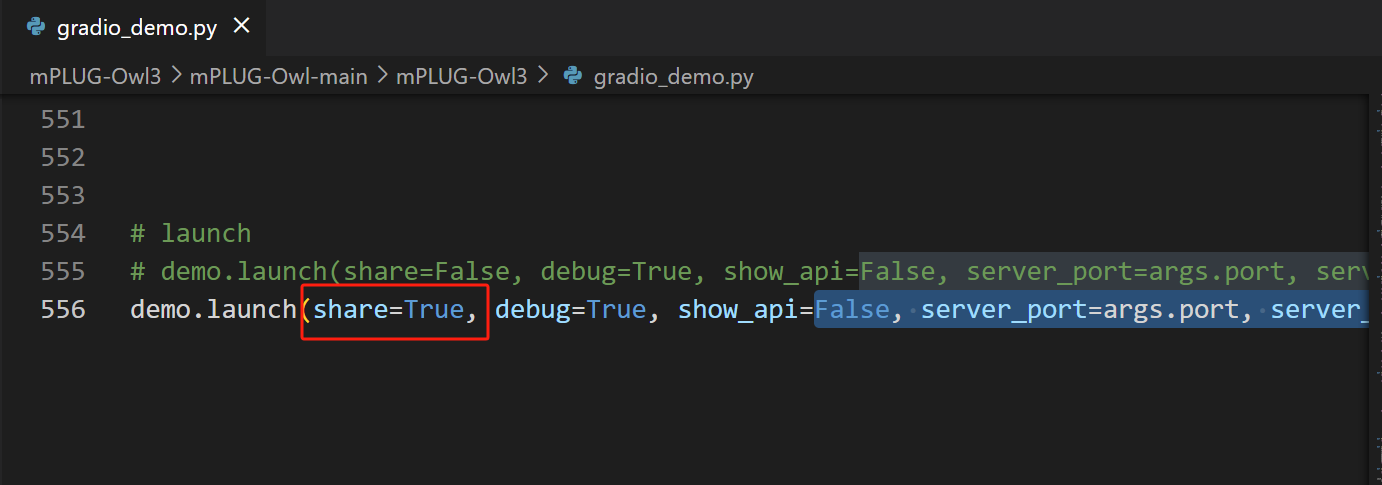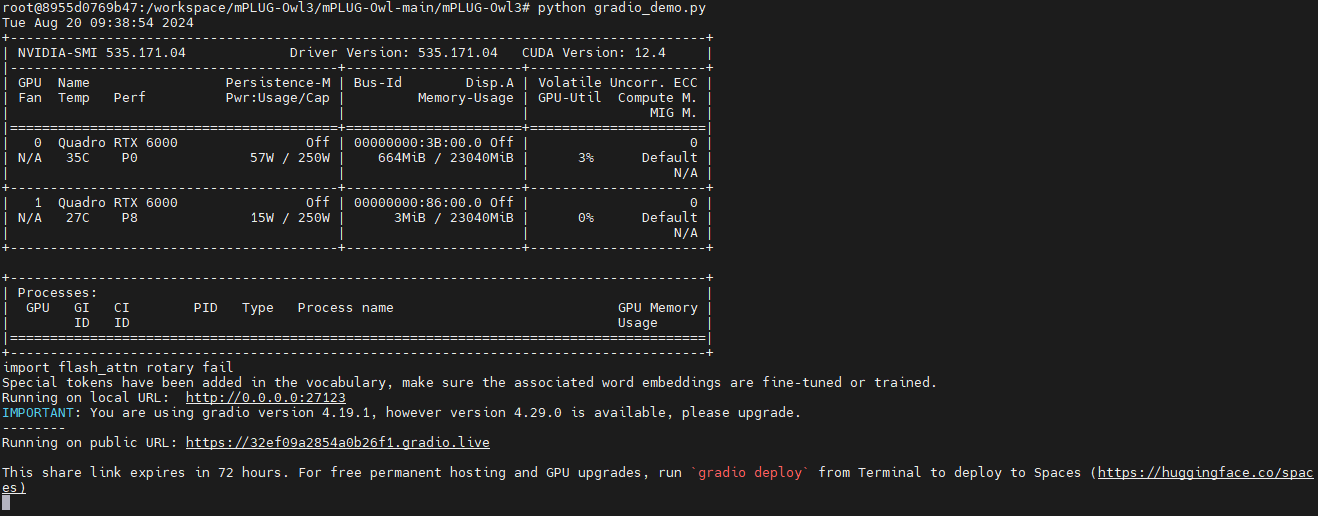mPLUG-Owl3环境搭建&推理测试
多模态的大模型也写了很多篇,阿里系的之前有一篇Qwen-VL的相关部署,感兴趣的童鞋请移步(
一、模型介绍
论文作者来自阿里mPLUG团队,他们一直深耕多模态大模型底座,在此之前还提出了:(1)高效多模态底座mPLUG系列(2)模块化多模态大语言模型底座mPLUG-Owl系列(3)文档理解底座mPLUG-DocOwl系列等。mPLUG-Owl3模型的主体结构由视觉编码器SigLIP-400M、语言模型Qwen2和线性连接层组成。视觉编码器提取图像特征后,经线性层映射到与语言模型相同的维度。作者在文本序列中使用了作为图像标记位,并通过self-attention和cross-attention并行建模的方式将视觉特征融合到文本特征中。与Flamingo、EVLM等工作在语言模型的每一层插入cross-attention层的做法不同,mPLUG-Owl3仅将网络的少数层拓展为提出的Hyper Attention Transformer Block (HATB),从而避免了增加大量参数和计算。

二、环境搭建
模型下载
代码下载
git clone
环境安装
docker run -it -v /datas/work/zzq/:/workspace --gpus=all pytorch/pytorch:2.4.0-cuda12.4-cudnn9-devel bash
cd /workspace/mPLUG-Owl3/mPLUG-Owl-main/mPLUG-Owl3
pip install -r requirements.txt -i
gradio生成公用链接:
(1)先按照提示,下载frpc_linux_amd64文件,
(2)重命名为frpc_linux_amd64_v0.2, 并放入gradio(/opt/conda/lib/python3.11/site-packages/gradio)这个文件夹中(按你对应的,每个人的路径可能不一样)
(3)给gradio下的frpc_linux_amd64_v0.2文件增加权限 chmod +x /opt/conda/lib/python3.10/site-packages/gradio/frpc_linux_amd64_v0.2
三、推理测试
1、gradio demo
修改代码


python gradio_demo.py

2、Quick start
python test,py





 浙公网安备 33010602011771号
浙公网安备 33010602011771号